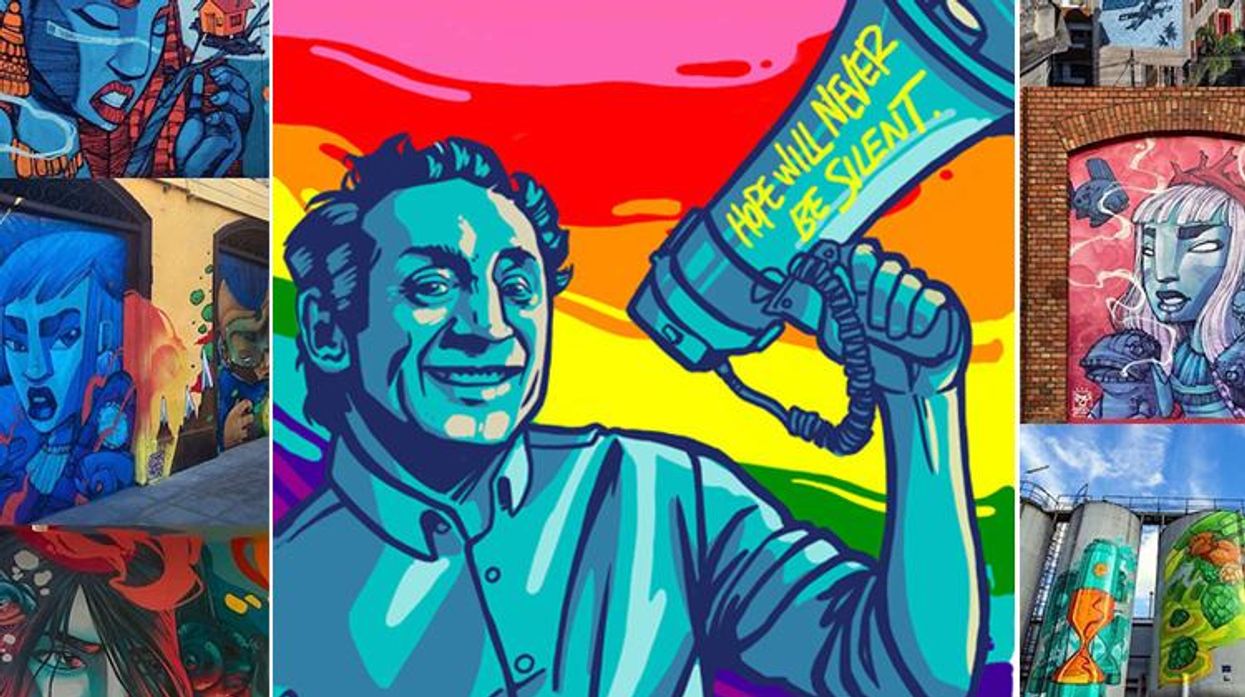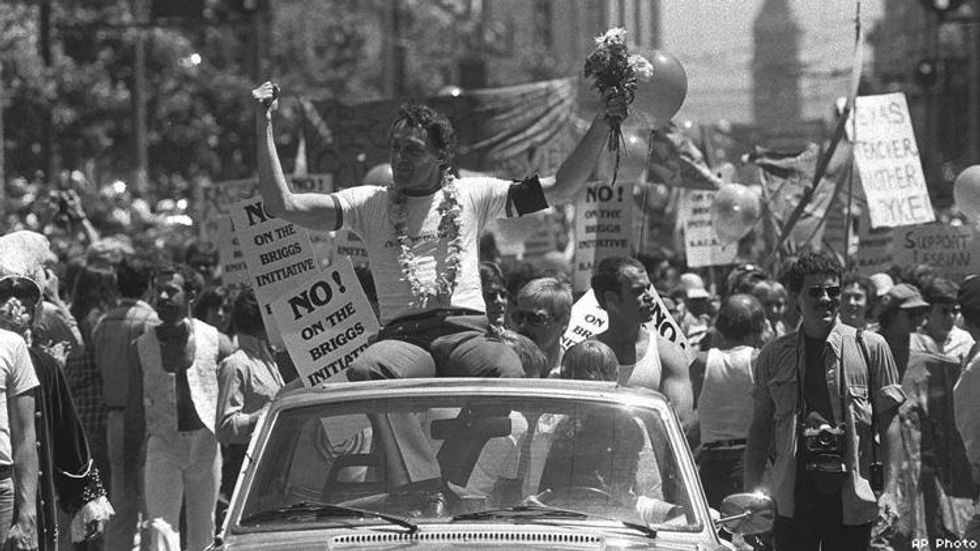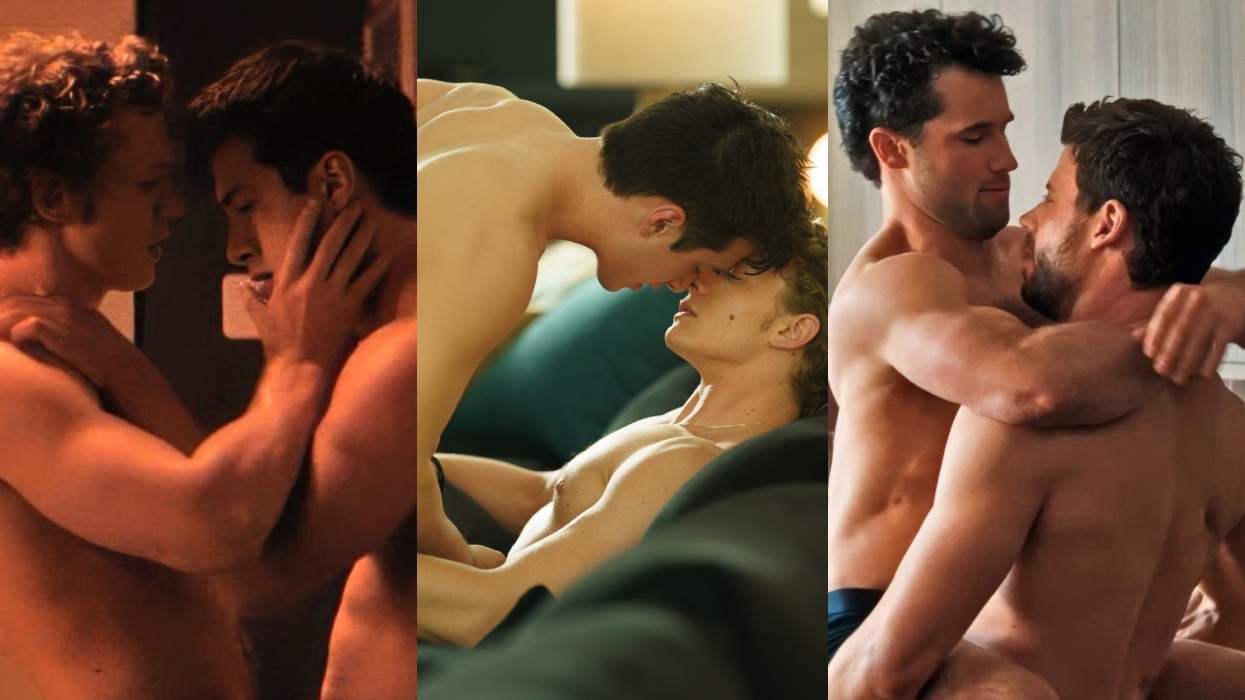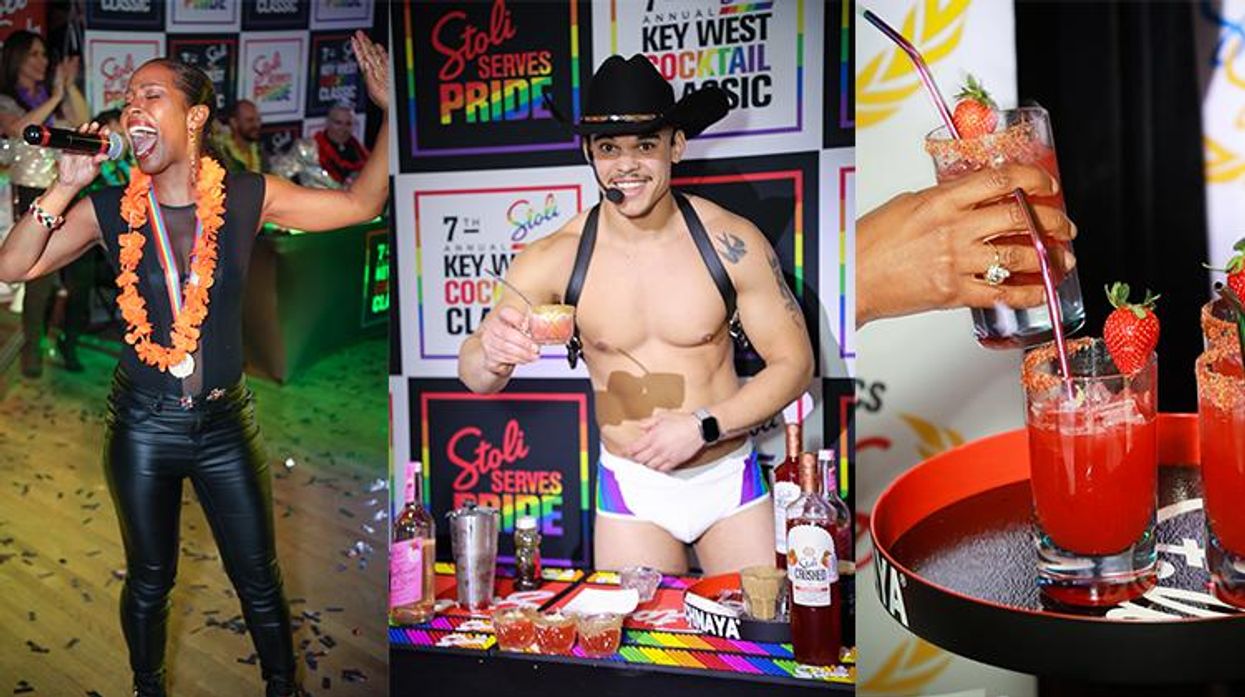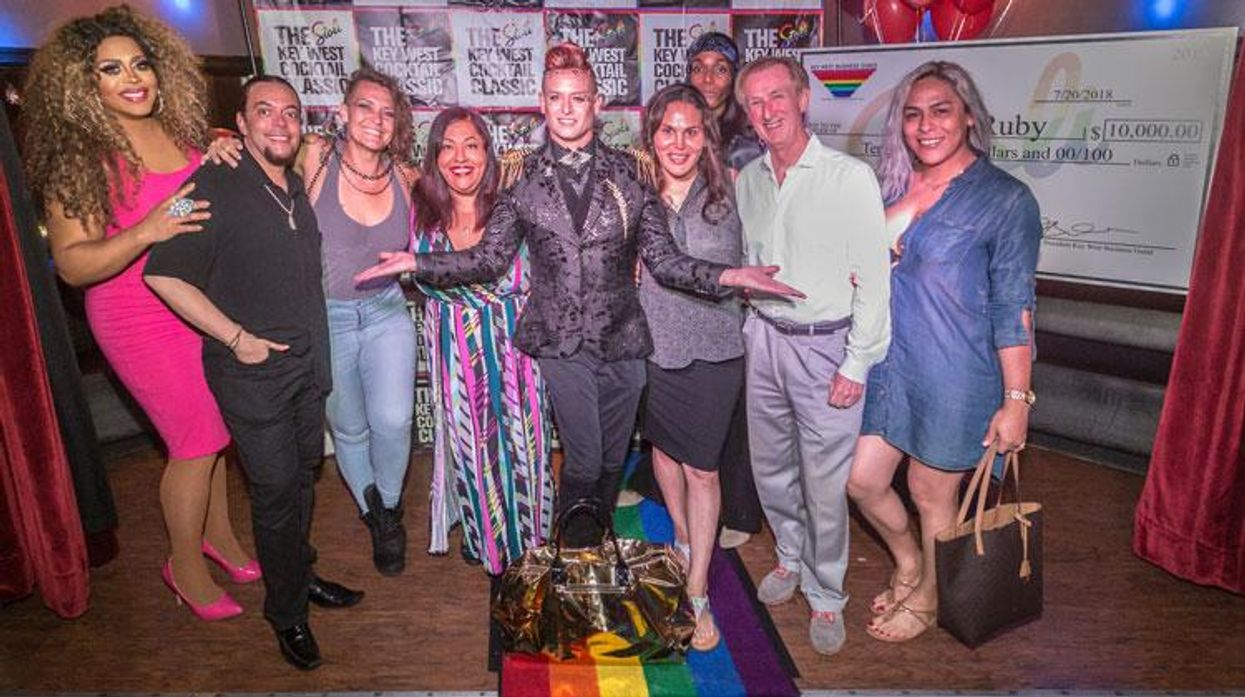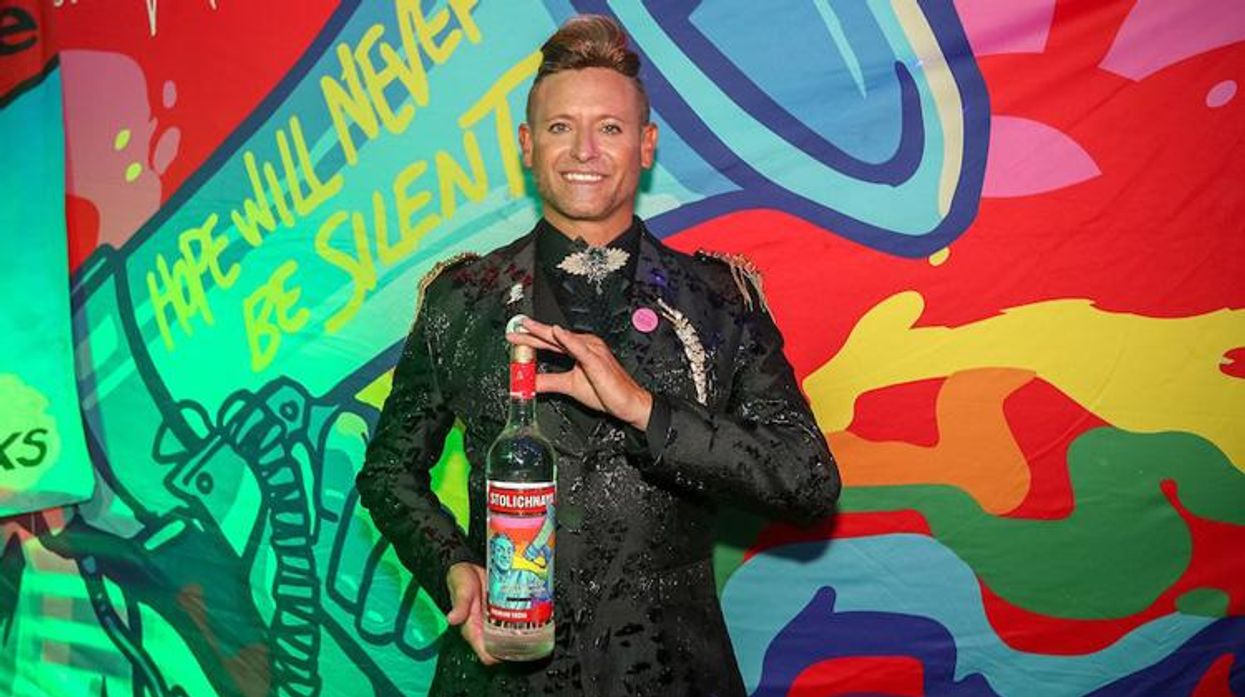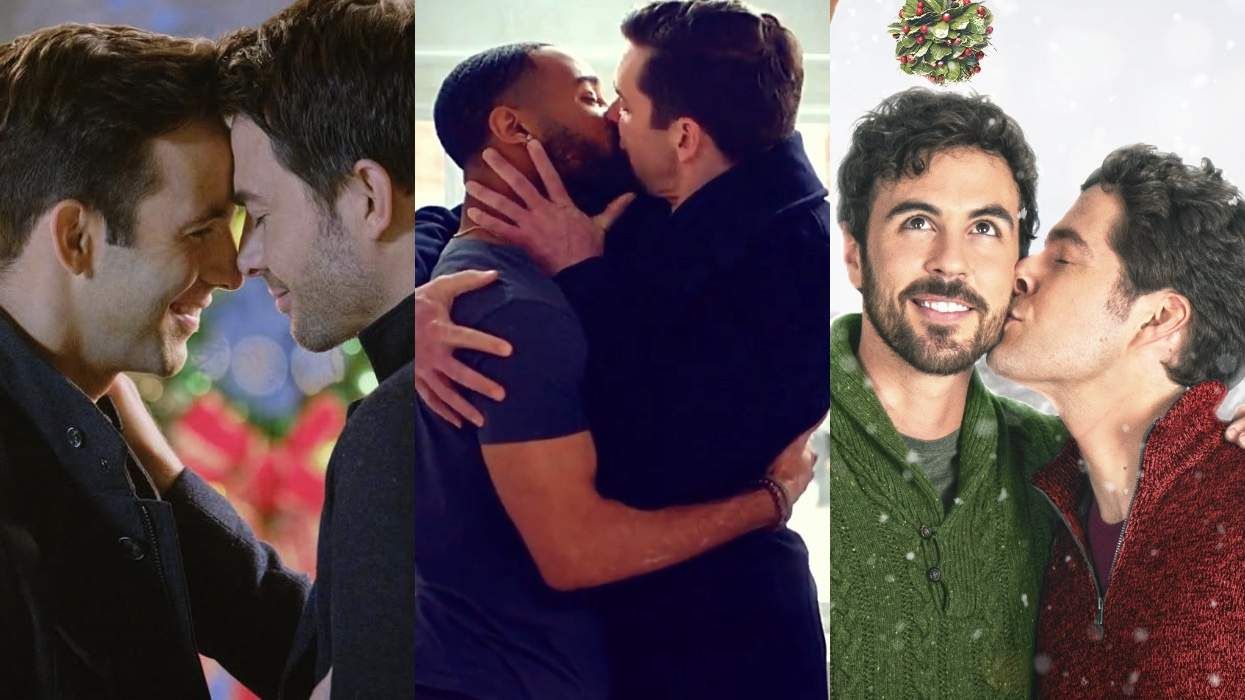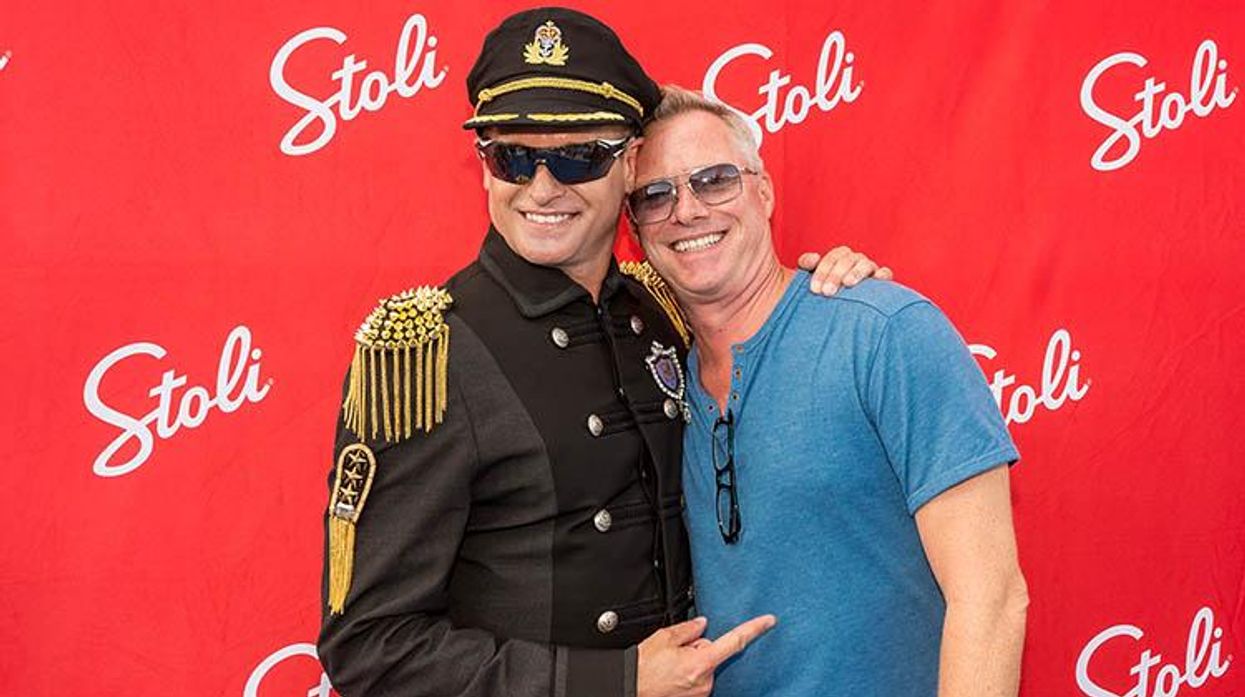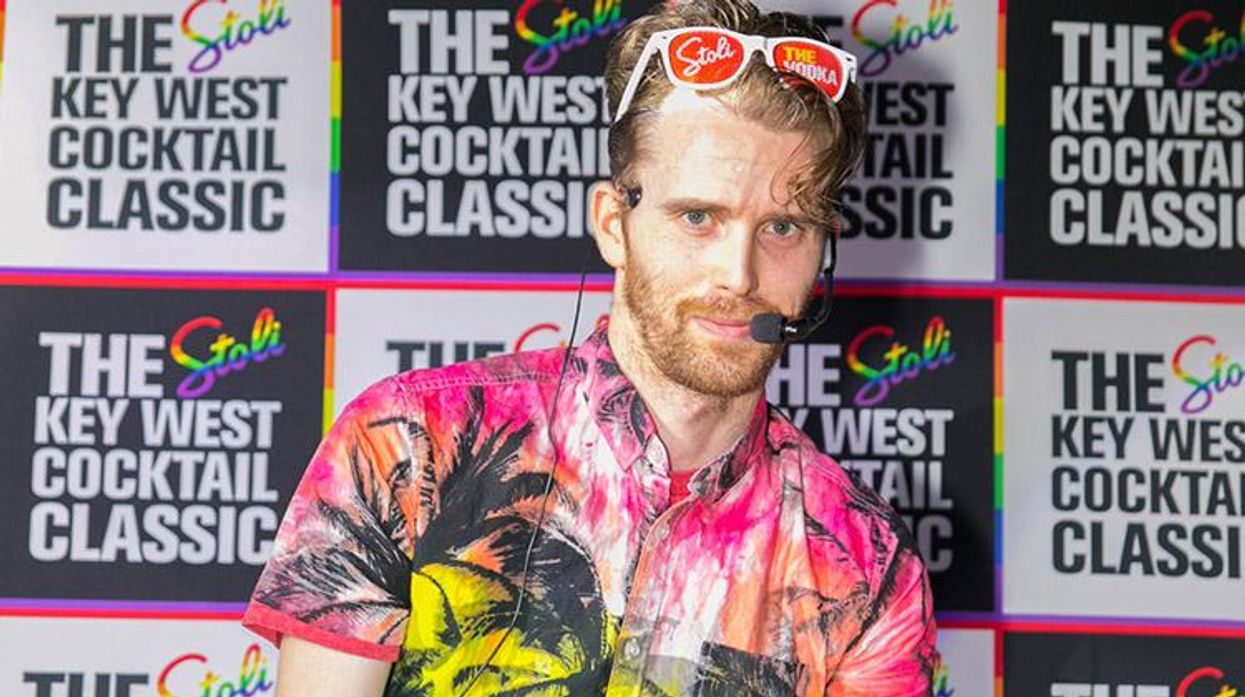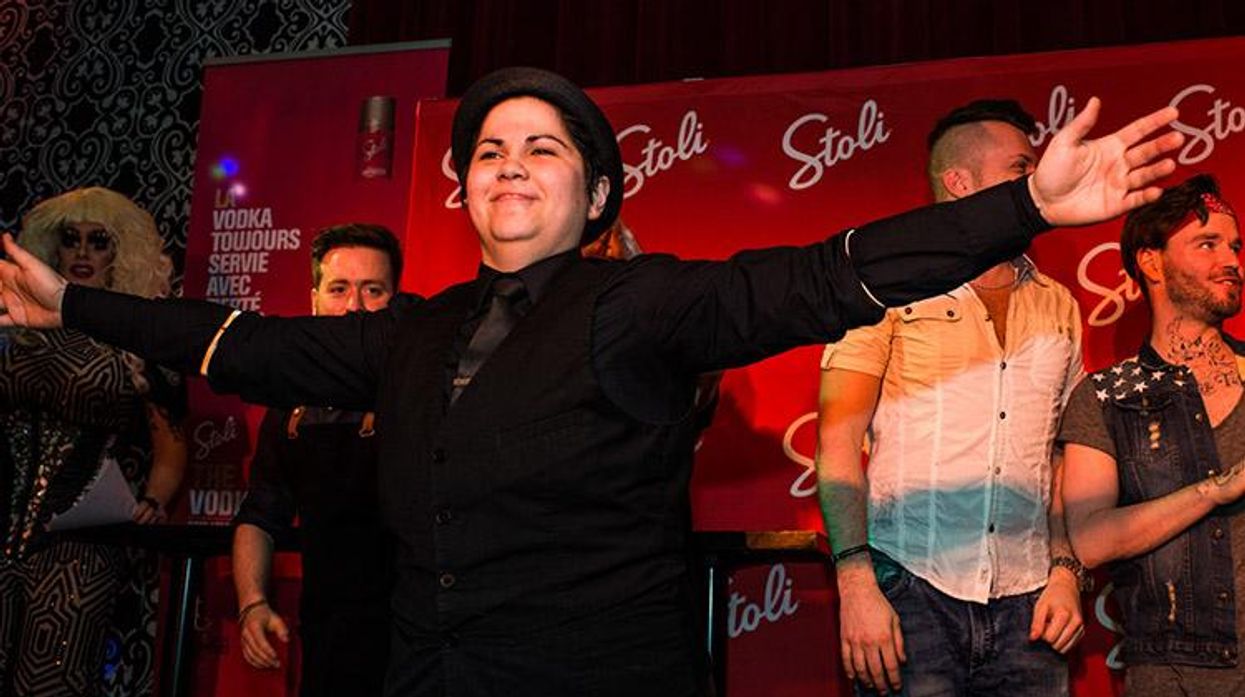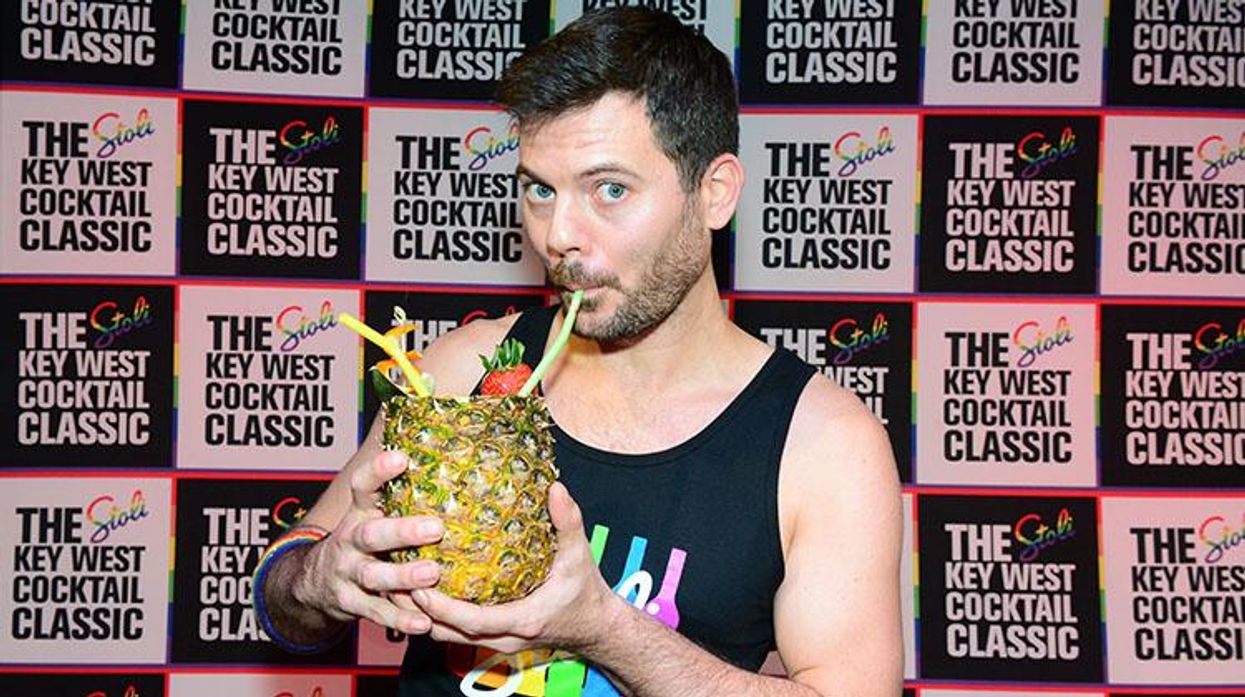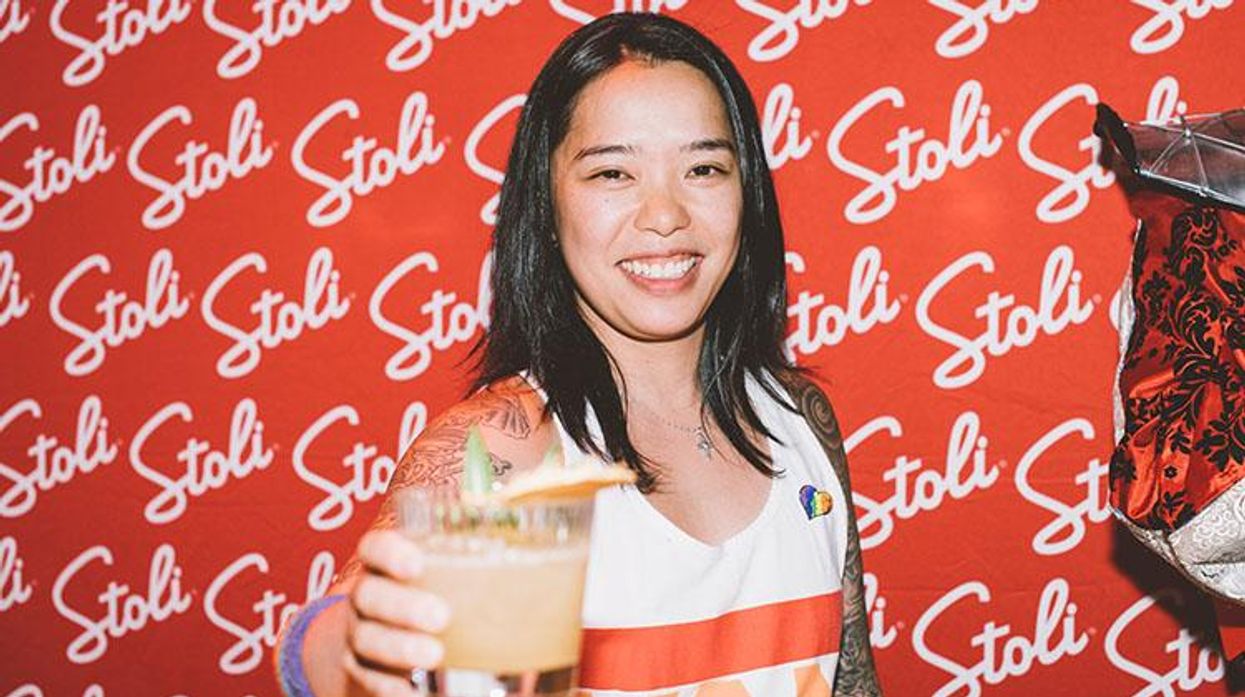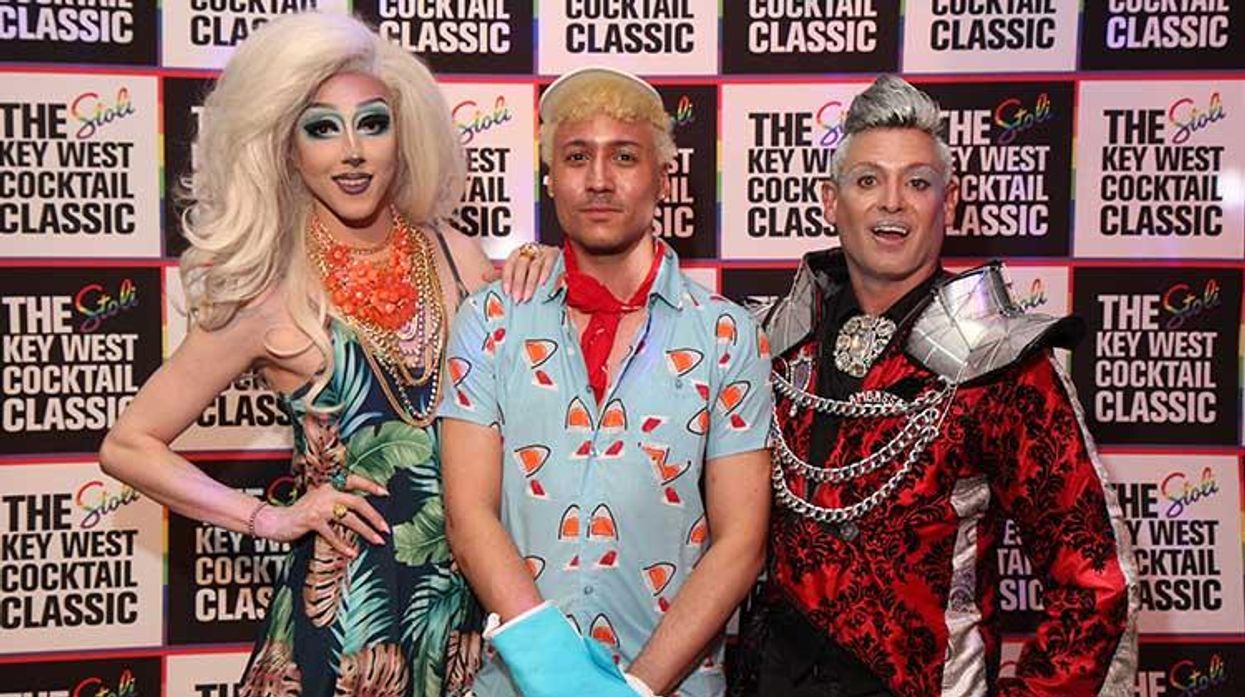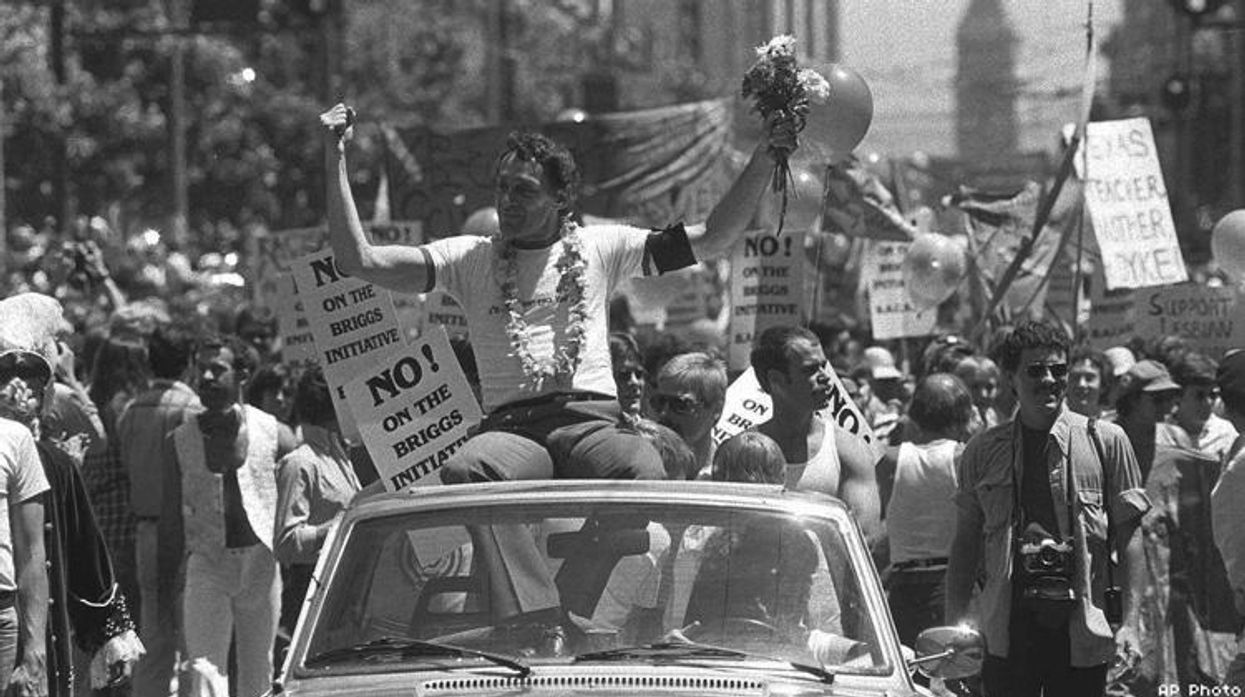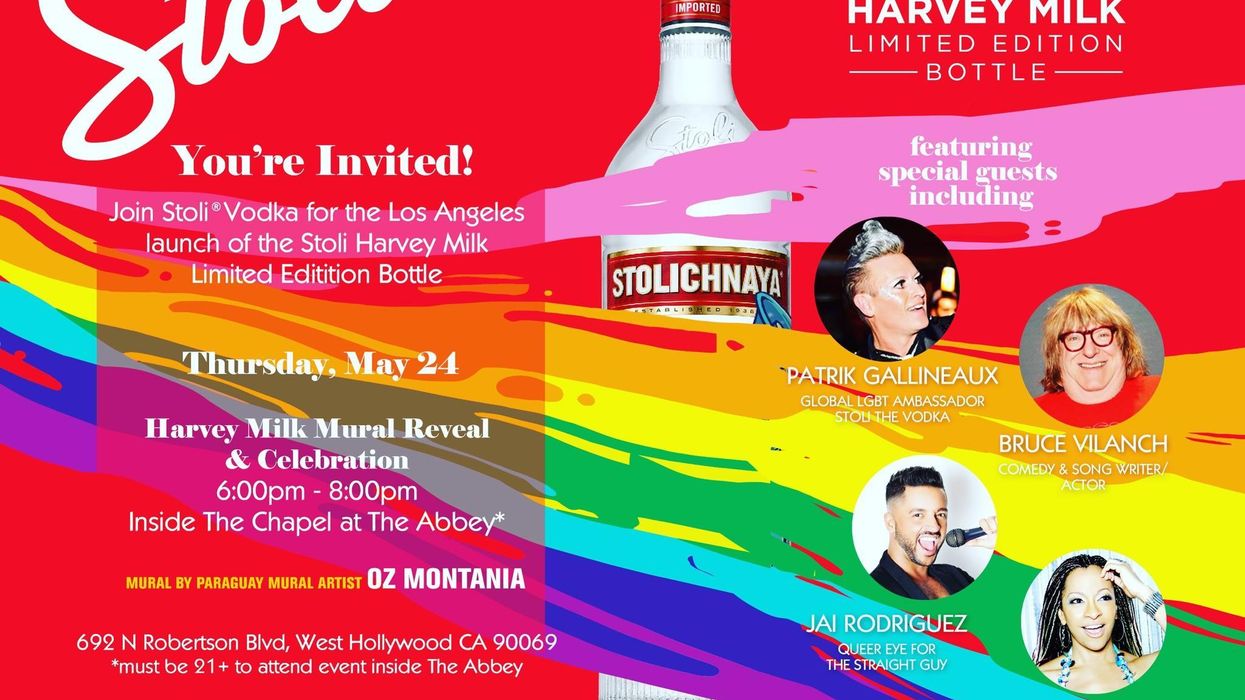Oz Montania may not be a familiar name to many in the U.S., but his works are part of daily life in Asuncion, the capital city of Paraguay. Looking out from the capital's high-rise office buildings and apartments, hundreds of feet of art-covered edifices line the backdrop of the cityscape, children play alongside his paintings on basketball courts, pedestrians cross by them moving about their days down below.
To honor the 40th Anniversary of Milk Day -- which celebrates the birthday of pioneer Harvey Milk -- the city of San Francisco will unveil a mural of Montania's own within the Castro District.
We sat down with the artist to talk about Milk as a source of inspiration and hope, how his message still resonates around the world, and what street art has in common with Milk's legacy.
What about Harvey Milk's story inspired you to use him as a muse for your work?
I had seen The Times of Harvey Milk, starred by Sean Penn, and it hit me how profoundly human he was and how he gave a voice to all those people who were disinfranchised, becoming a paladin of sorts for them. That seemed very noble for me, and what the movie conveys is that he was a tremendously caring and just, someone who fought tooth and nail to undo injustices. I believe that aspiring to be someone like Harvey Milk is the ultimate goal for someone who wants to positively affect their community. So what inspired me the most about him was his humility and desire for justice.
What does Harvey's message of visibility and bravery mean to you?
It's been forty years since people like Harvey Milk have been fighting for everyone to be brave enough to be who their are and live how they want to live, to have their own identity and be able to defend it. At this point, sometimes many of us take that for granted, but I think that it is very important to remember how it al started, who were the first people brave enough to inspire the generations to come. Being a pioneer has a priceless worth to it, because to be a pioneer when no one else is doing it requires much more bravery that to already have your own identity and defend it when that is a given.
Your work spans streets and cities. How does street art connect with us?
One of the most interesting things about urban art is that it is very democratic; it brings art over to the people in a way that few of the other disciplines get to do because most times art is seen as something elitists, something that is made only for a minority that can afford it. Usually, urban art cannot be sold when it already is on the streets. It is done as a gift to the city and to its people, and that is what attracted me to it. Street art is a form of expression that people can adopt as their own. It is the true art form that conveys the vibe of the city. It has an intrinsic value that helps give shape to the identity of a certain place.
You originally painted the mural of Harvey in Paraguay, and you're recreating it in San Francisco, where Harvey accomplished much of his historic work. How does the mural's original placement impact the community at home?
The original mural is one of twelve community murals of SomosGay. As an ally, the mural represented a commitment on my part to the cause that people who are very near and dear to my heart are fighting for. To me, the mural states that I'm there, living in the same world as you, and I want to be part of your fight to make things change for the better.
What does having the mural in two locations, facing two distinct populations, mean to you?
For me, being able to connect different spaces through an homage to Harvey Milk is a way to show my utmost respect to him, and to his legacy both in his own community and around the world. People here in the Bay area don't have a clue of how much San Francisco and its scene has influenced the rest of the world. Having done this mural in Paraguay and then having it come to where it all begin has a tremendous meaning. It's all full circle for me, by painting it here I get to show respect to a city that has done so much to make the world a better place.
From what we understand, you helped build the Paraguayan street art community from the ground up. Has that ever brought you closer to other LGBT people that you may not have met otherwise?
It is true that when I started to paint street art in Paraguay it was almost non-existent, and there were little to no graffitis. I took the challenge of creating an space for urban expression personally. It was kind of a personal struggle to make street art transcend, to make the message relevant, to make Paraguayan urban art known around the world. At the same time, my work and my ethics made it possible for a lot of people to know my name, since I have always been open-minded in relation to causes very important to me, such as domestic violence, bullying, the mistreatment of indigenous peoples in my country, and so on. All these different causes have shaped the murals I have painted in the last seventeen years I've been doing this, and to me it has always been important for my murals to have some sort of social background. Among those people came the LGBT community, to which I'm tied to through SomosGay, with whom I've been working for many years both in drawing as in street art.
What are some differences between street art in Paraguay and the states? And Paraguay v. San Francisco?
There are several worlds of difference. The U.S. is basically the birthplace of street art, and from there it has spread worldwide. It is difficult to compare having such vast differences, so I think that instead of doing so we should observe how people have transformed street art to adapt it to the local scenes, using local languages and codes. Just like all the musical genres that were born in the States ended up transforming and adapting locally, all forms of art have done so as well. I believe there is responsibility to be taken when generating culture, because once it's done, you can't control its reach any longer. That's what happens with so many cultural expressions in the States; they begin there but then they end up transforming and adapting in a thousand different ways around the globe.
Do LGBT themes appear in other parts of your work?
Yes, apart from street art, I create a lot of drawings for projects such as SomosGays, for whom I have drawn covers of press kits on how to address LGBT themes, and other sorts of written materials. Thanks to that work, I have gained the animosity of a certain group of conservatives. I just assumed that fact as the cost of having a strong opinion, which definitely influences my work.
What makes you most proud to be an advocate for the LGBT community?
It fills me with pride to know that we are on the right side of history, of the human side, of freedom and justice, in the good company of incredible people. It has never crossed my mind to think otherwise, to not defend this cause. I dream about the day when LGBT themes are normalized, it just feels like common sense.
What does it mean to have your work featured on the Limited Edition Stoli Harvey Milk Tribute bottle?
It is an honor for me to part of this project. Ever since I reached out to participate, I felt overjoyed to do so.


